Whether you want to become a back end developer or simply familiarize yourself with databases, you’ll need to learn SQL. However, programming languages can seem a little daunting for beginners.
Fortunately, you can start learning SQL even without coding experience. Watching YouTube tutorials and taking online courses are some of the best ways to master SQL.
In this article, we’ll introduce you to SQL and the benefits of learning it. Then, we’ll show you how to learn this language as quickly as possible. Let’s get started!
An Introduction to SQL
SQL is an abbreviation for Structured Query Language. Put simply, it is a programming language that you can use to manage relational databases.
In a relational database, structured data is organized into tables with rows and columns. All Relational Database Management Systems (RDMS) like MySQL, PostgreSQL, Oracle DB, and SQL Server use SQL to communicate with this data.
In WordPress, your site data is stored in a MySQL database. Using SQL queries, you can store, alter, or delete data from this database.
For example, you can use a MySQL query to manage your spam comments. This will inform WordPress to locate comments marked as spam and delete them:
DELETE FROM wp_comments WHERE wp_comments.comment_approved = 'spam';
If you want to view your customer transactions, you can query the purchased items or customer ID. This enables you to quickly access information about your online store:
SELECT * FROM users JOIN orders ON orders.user_id = users.id WHERE state = 'Washington';
There are different types of SQL commands that you can use:
- DDL (Data Definition Language): this creates and modifies database objects.
- DML (Data Manipulation Language): it creates, modifies, or deletes data.
- DCL (Data Control Language): this controls access to data in the database.
- DQL (Data Query Language): this performs queries to find information.
However, SQL can only be used in relational databases. Since non-relational (NoSQL) databases do not store data in tables, they require different query languages.
Get Content Delivered Straight to Your Inbox
Subscribe to our blog and receive great content just like this delivered straight to your inbox.
Why You Might Want to Learn SQL
After you master the fundamentals of SQL, you can use it to extract relevant data from a large database. Whether you’re a data analyst, business owner, or website administrator, you can benefit from learning SQL.
Although SQL was first introduced in the 1970s, it remains one of the most popular programming languages. In fact, SQL ranks the third most frequently used coding language behind JavaScript, HTML, and CSS.
Plus, SQL is a standard language that many businesses use to manage their data. Even social media platforms like Facebook use SQL to store and analyze information about their users. Since SQL is so common, learning this language can give you new job opportunities.
As a data scientist or analyst, you’ll have to extract, analyze, and interpret data. Without needing to download data into a spreadsheet, you can use SQL to directly access and analyze the information in a database.
Here are some additional jobs that may require SQL:
- Back end development: create, update, and delete data on the back end of a website.
- Digital marketing: use SQL queries to find actionable insights about business processes.
- Accounting: retrieve and analyze a business’s financial data.
- Database administration: manage databases with SQL and database software.
Even though SQL can seem complicated at first, it is an easy programming language to learn. Its syntax is made up of common English words, so you can quickly understand the purpose of each query or command.
Chances are you deal with data on a daily basis. Using SQL, you can access and interpret information on your website or business. Then, you can perform data analysis to solve problems and understand your audience.
How to Learn SQL (3 Methods)
There are plenty of online resources that you can use to learn SQL. Let’s look at some effective ways to master this language.
1. Find a YouTube Tutorial
If you’re looking to learn SQL as fast as possible, YouTube is a great place to start. Rather than completing a lengthy course, you can find a tutorial that simplifies the language into its core concepts.
For example, the SQL for Beginners Tutorial will teach you how to retrieve data from a database:
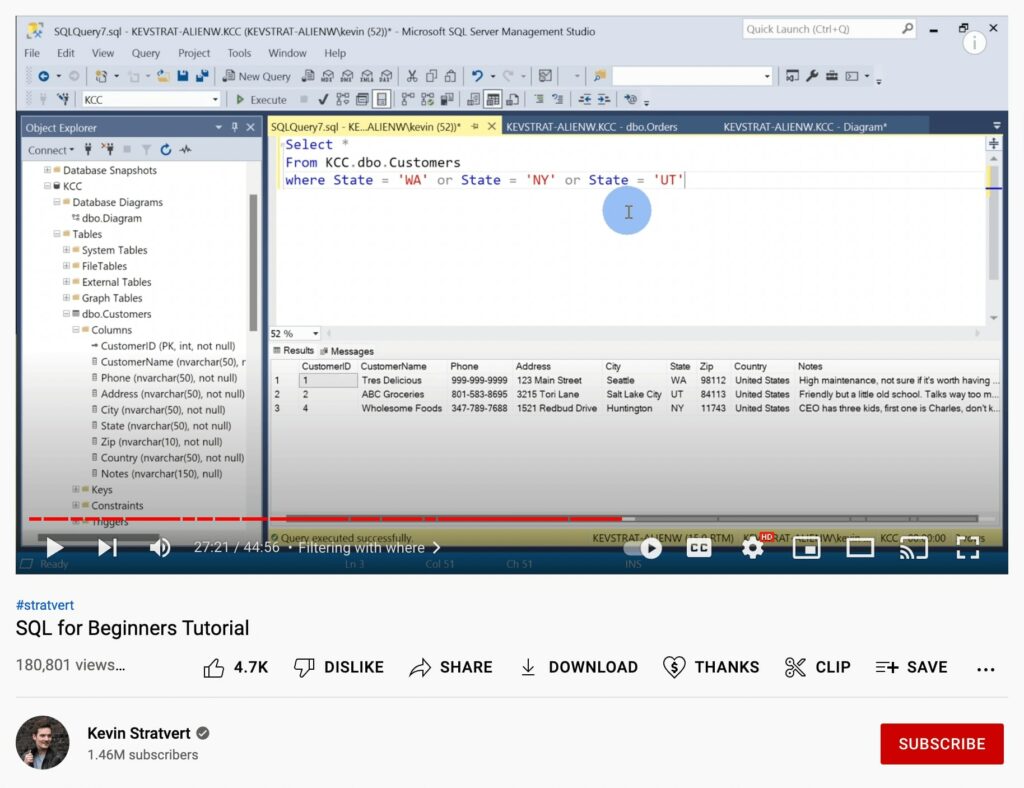
In this 45-minute video, you’ll learn the basics of SQL, databases, and Relational Database Management Systems. The creator will walk you through installing Microsoft SQL Server and SQL Server Management Studio. Using these free tools, you can familiarize yourself with tables, primary keys, data types, and more.
You can also find free courses that dive into more complex SQL topics. If you want to learn about queries, Learnit Training provides a 3-hour video called SQL Querying for Beginners:
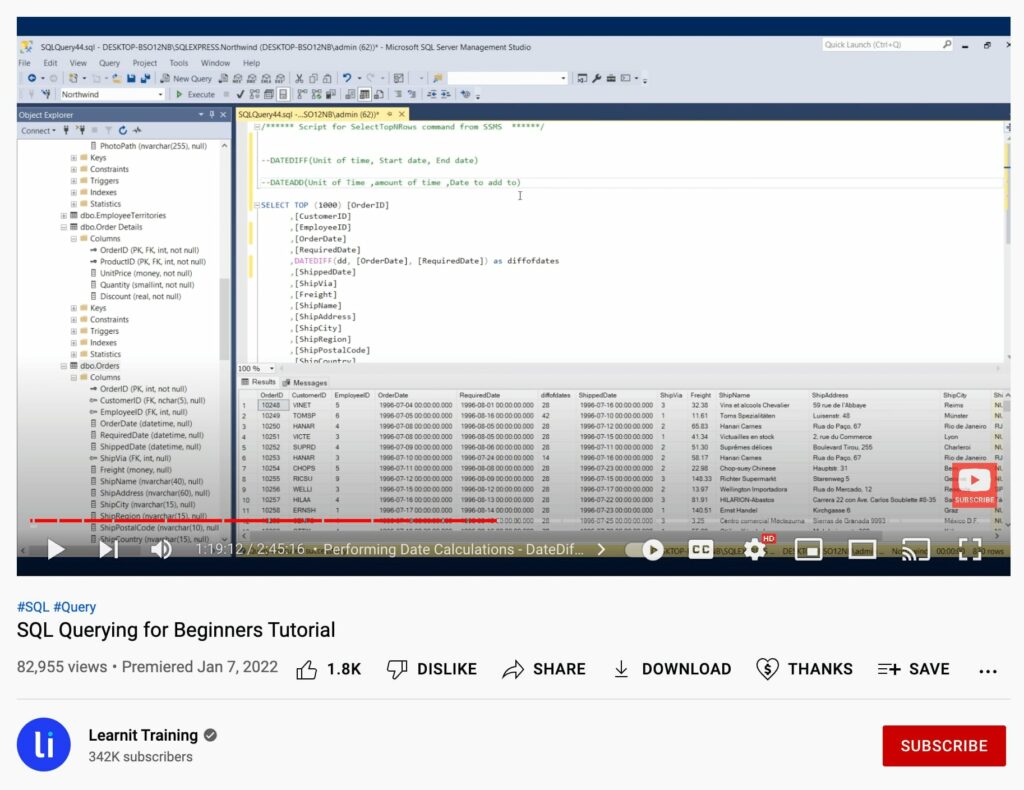
This video starts by explaining some basic SQL terminology and its main uses. It then shows you how to perform an SQL query. By the end of the video, you’ll be able to use criteria conditions, retrieve data from multiple tables, and organize and export the query results.
Before watching a video, we recommend checking its publishing date and view count. You’ll want to make sure its information is still relevant. You can also review its comments to see if other users found the tutorial helpful.
2. Take a Free Course
Some people prefer structured courses. Fortunately, there are many e-learning materials that focus on the fundamentals. By completing untimed modules, you can become an SQL developer at your own pace.
One of the best platforms to learn coding skills is Codecademy. After you create an account, you can look for beginner courses such as Learn SQL. This course will teach you how to use SQL to communicate with relational databases:
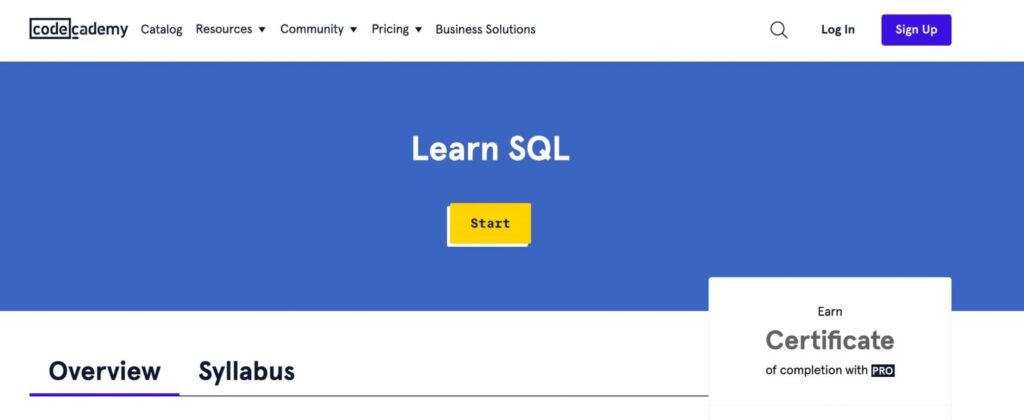
In each module, you’ll be able to enter commands, run queries, and use functions to perform database operations:
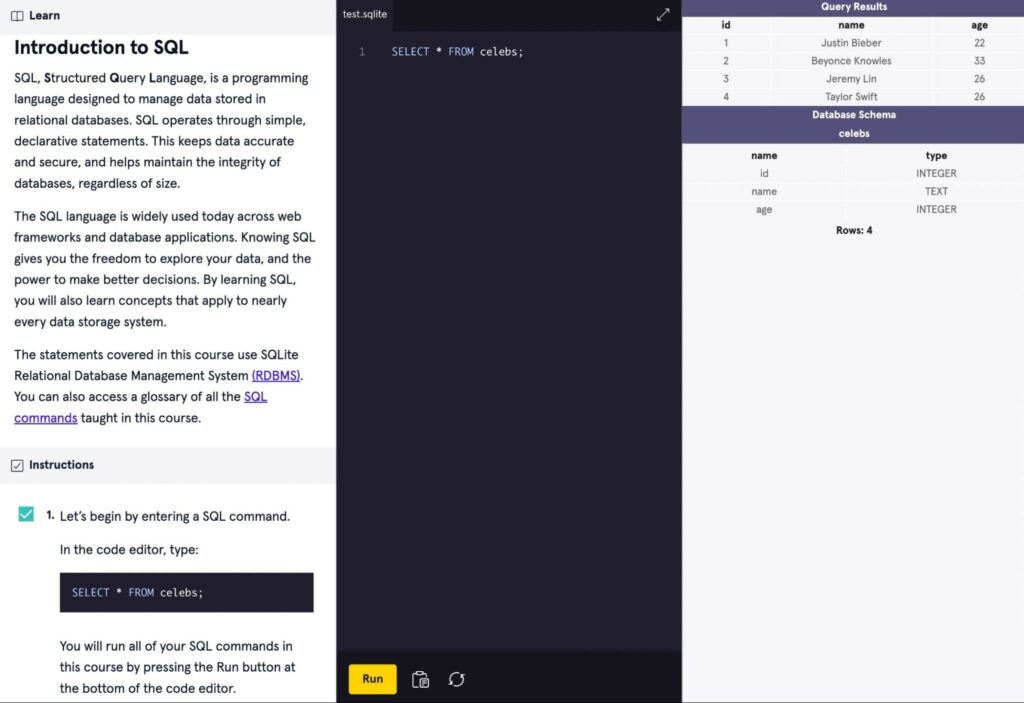
If you like educational videos, Khan Academy’s Intro to SQL course may be the right course for you. It teaches you the basics of making queries and modifying databases with instructional videos:
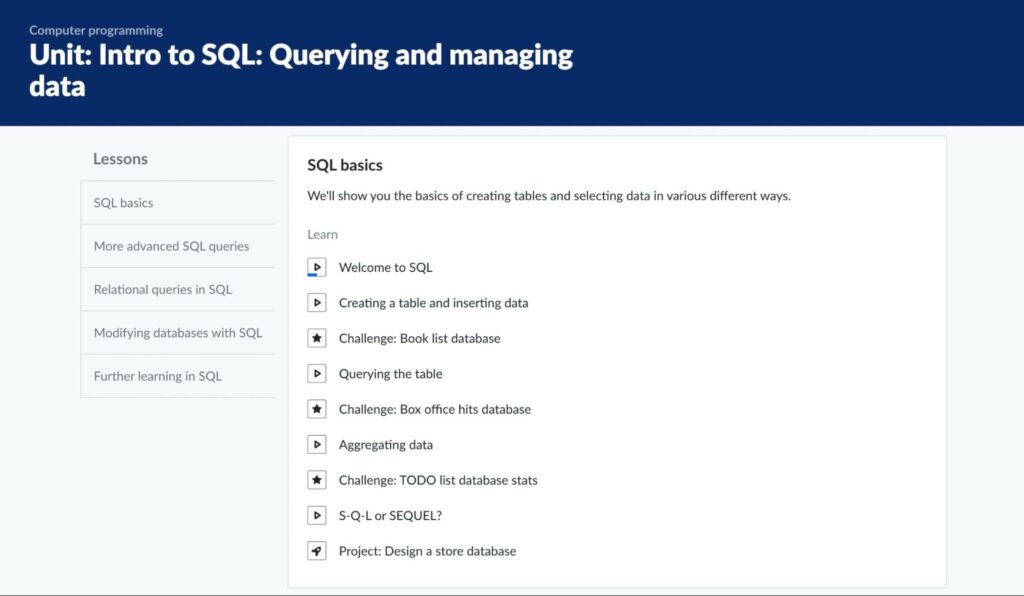
During the course, you can watch code being written in real-time. You’ll also be able to copy it from the video:
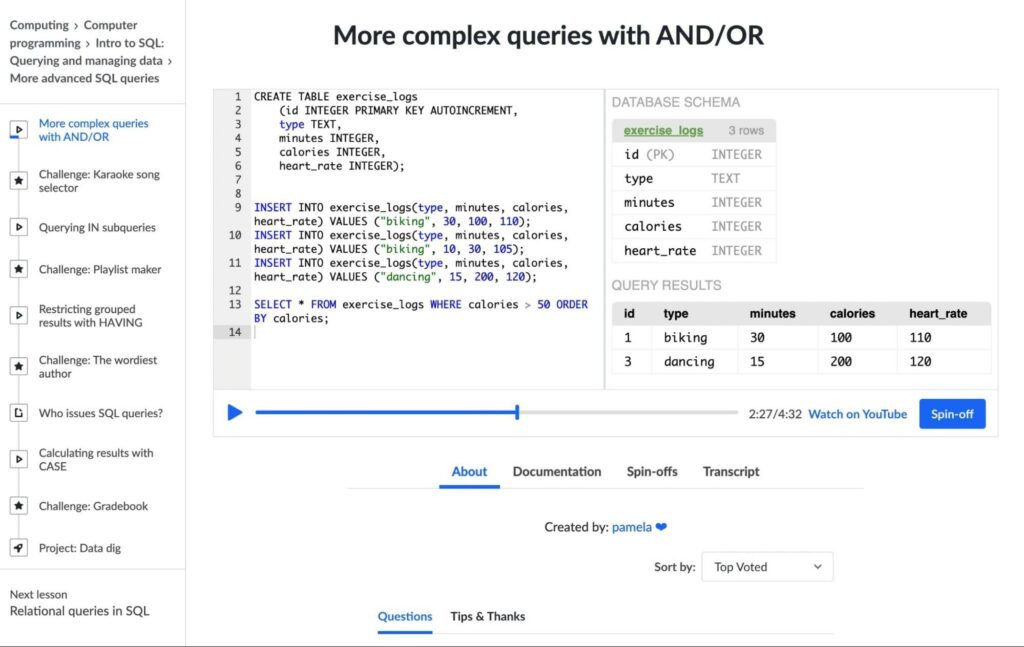
For a more in-depth explanation of SQL, you can complete the SQL Tutorial on W3Schools. This shows you how to write SQL statements with proper syntax, as well as more complex tasks like creating and altering a database:
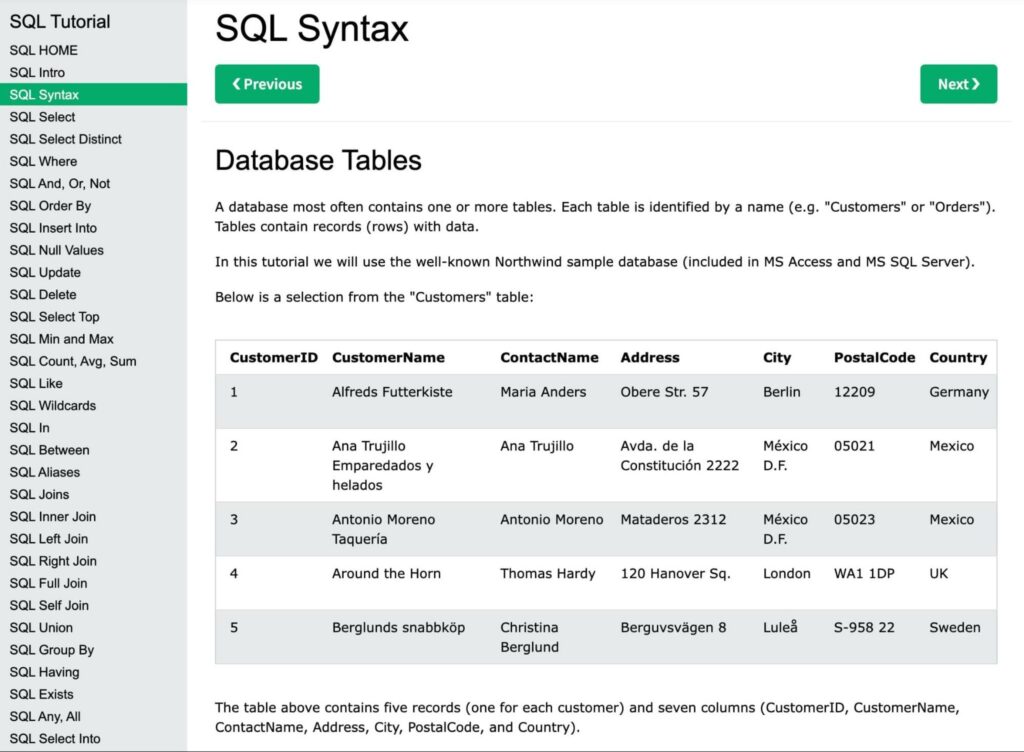
Once you learn about these processes, you can test your new knowledge with practice exercises:
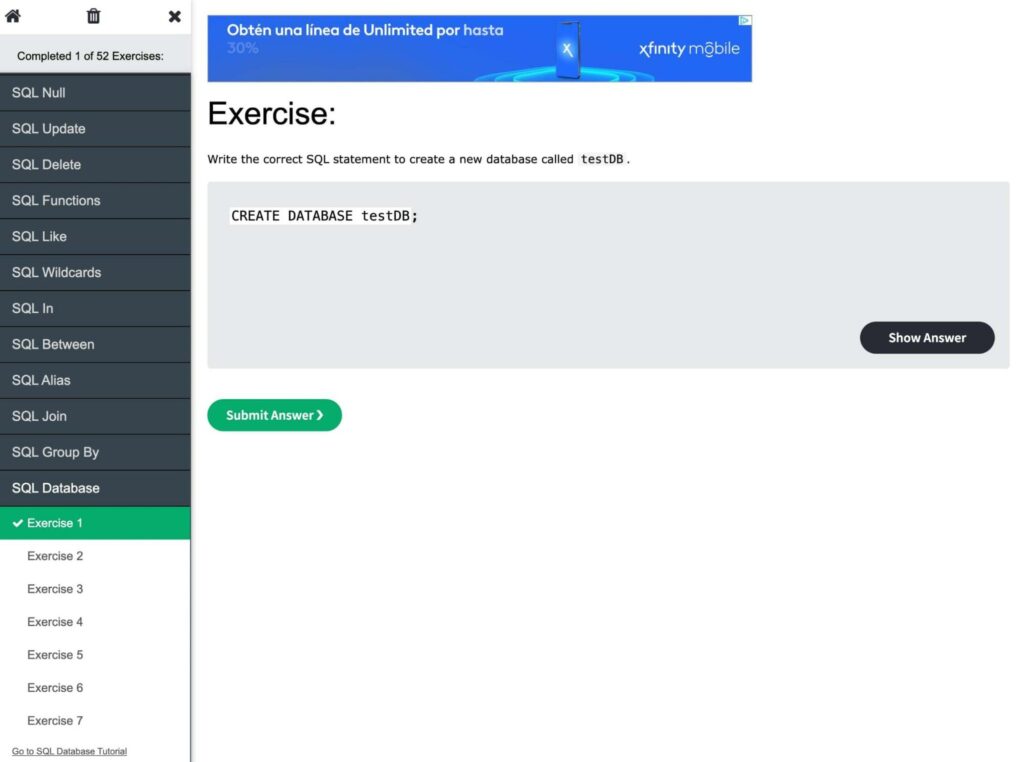
As you can see, there’s no shortage of online courses you can take to learn SQL. All you need to do is find the one that suits your needs.
3. Earn a Certification
In most cases, you won’t need a college degree to work with SQL. However, you might want to showcase your coding skills on your resume. When looking for a position that requires knowledge of SQL, having a certification can increase your chances of getting hired.
Fortunately, you can easily gain a SQL certification online. Coursera’s Introduction to Structured Query Language teaches you how to create a MySQL database. Once you complete the course, you’ll receive a certificate:
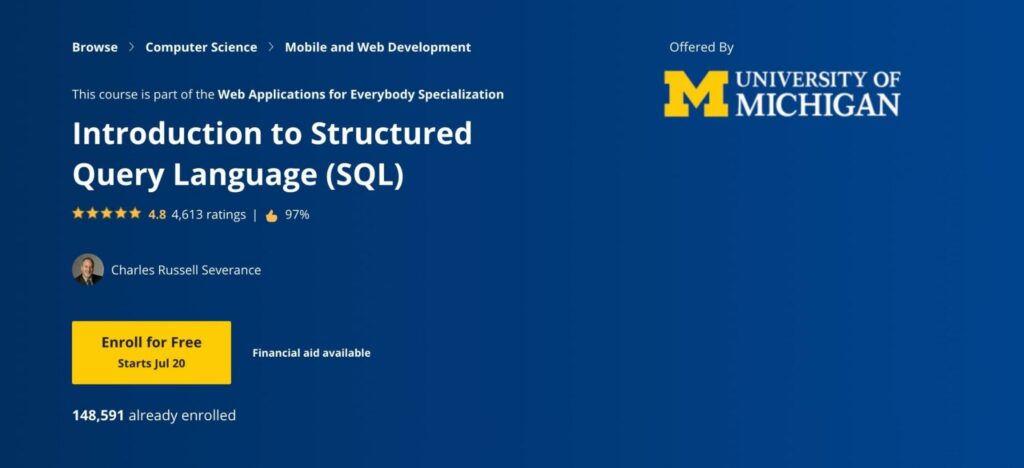
Keep in mind that this is the second level in the Web Applications for Everybody Specialization. To get up to speed, you’ll have to first take the Building Web Applications in PHP course. If you’re already familiar with PHP, HTML, and CSS, feel free to sign up for the SQL lessons.
Another way to get certified in SQL is to purchase a course on Udemy. In the Complete SQL Bootcamp, you’ll learn about analyzing data, creating tables and databases, and more:
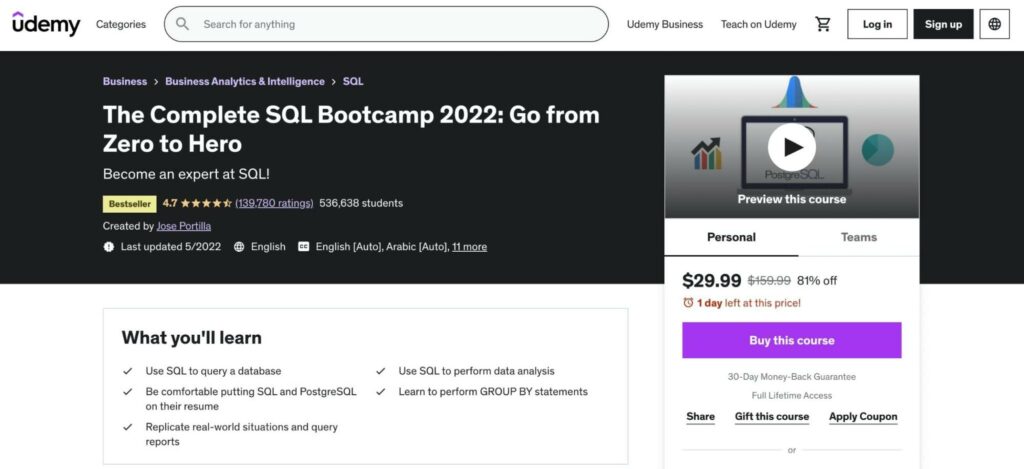
This Udemy course teaches you how to set up a PostgreSQL database management system. Since this applies to other SQL databases, it can be beneficial to include this certification on your resume.
Start Managing Your Database with SQL
If you own a WordPress website, your data will be stored in a MySQL database. When you learn the SQL query language, you can instruct WordPress on how to deal with this data. Plus, SQL skills can also help you get high-paying jobs in data science, marketing, and development.
To review, here are some simple ways that you can start learning SQL:
- Find a YouTube tutorial from creators like Kevin Stratvert or Learnit Training.
- Take a free course on Codecademy, Khan Academy, or W3Schools.
- Earn a certification from Coursera or Udemy.
Once you learn the SQL basics, you’ll likely want to create a new MySQL database. With a DreamHost shared hosting plan, you can build unlimited databases and enjoy faster queries!
Power Your Website with DreamHost
We make sure your website is fast, secure and always up so your visitors trust you. Plans start at $1.99/mo.
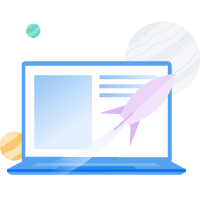
The post How to Learn SQL… Fast appeared first on Website Guides, Tips & Knowledge.
source https://www.dreamhost.com/blog/learn-sql/

No comments:
Post a Comment